Snorkeling with Sharks and Manta Rays
We snorkeled with Blacktip Reef Shark (Carcharhinus melanopterus) in Bora Bora. It is easily identified by the prominent black tips on its fins (especially on the first dorsal fin and the caudal fin). Among the most abundant sharks inhabiting the tropical coral reefs of the Indian and Pacific Oceans, this species prefers shallow, inshore waters and its exposed first dorsal fin is a common sight in the region. Most blacktip reef sharks are found over reef ledges and sandy flats, though they have also been known to enter brackish and freshwater environments. This species typically attains a length of 1.6 m (5.2 ft).
Blacktip reef sharks have extremely small home ranges and exhibit strong site fidelity, remaining within same local area for up to several years at a time. They are active predators of small bony fishes, cephalopods, and crustaceans, and have also been known to feed on sea snakes and seabirds. Accounts of the blacktip reef shark’s life history have been variable and sometimes contradictory, in part reflecting geographical differences within the species. Like other members of its family, this shark is viviparous with females giving birth to 2–5 young on a biennial, annual, or possibly biannual cycle. Reports of the gestation period range from 7–9, to 10–11, to possibly 16 months. Mating is preceded by the male following closely behind the female, likely attracted by her chemical signals. Newborn sharks are found further inshore and in shallower water than adults, frequently roaming in large groups over areas flooded by high tide.
Timid and skittish, the blacktip reef shark is difficult to approach and seldom poses a danger to humans unless roused by food. However, people wading through shallow water are at risk of having their legs mistakenly bitten. This shark is used for its meat, fins, and liver oil but is not considered to be a commercially significant species. The International Union for Conservation of Nature (IUCN) has assessed the blacktip reef shark as Near Threatened. Although the species as a whole remains widespread and relatively common, overfishing of this slow-reproducing shark has led to its decline at a number of locales.
http://www.iucn.org/
http://animals.nationalgeographic.com/animals/fish/blacktip-shark/
During that time we also saw a Lemon shark ( Negaprion brevirostris), a shark that belongs to the family Carcharhinidae that can grow 10 feet (3.0 m) long.[1] It is known as the lemon shark because at certain depths, the light interaction with the local seawater can make this shark have a tanned and yellow pitted appearance, much like the surface of a lemon.
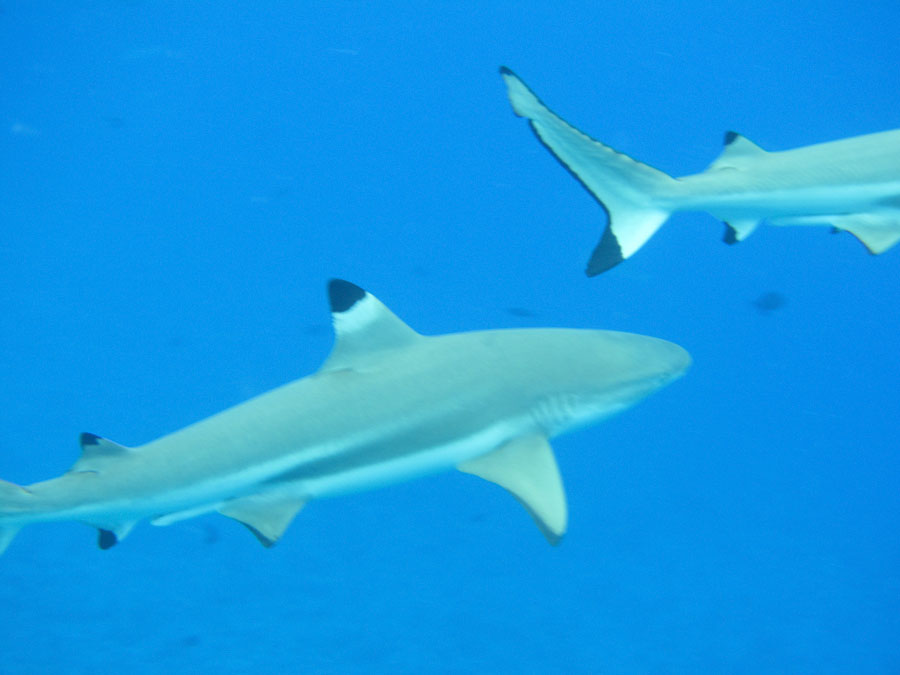
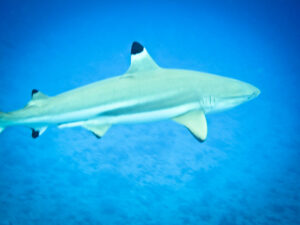
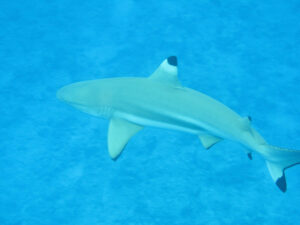
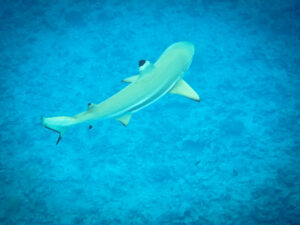
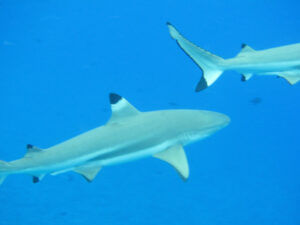
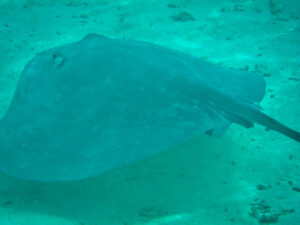
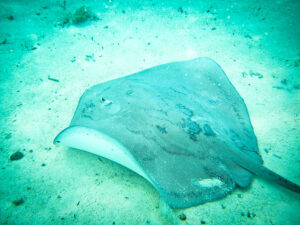
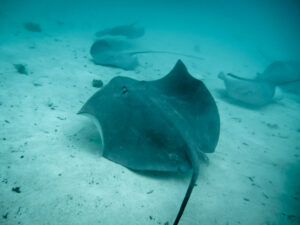


The Manta Rays are also plentiful in the area, are used to humans, and swam all around over and under us and feel like velvet. What the giant manta rays do with humans is unique in this world. A totally wild animal, that can be twice the mass of a horse, seeks out and revels in human physical contact. Manta rays are the largest rays and are closely related to sharks. These harmless rays have a short tail and no stinging spine. They are very acrobatic; they can even leap from the water. Remoras (Echeneida) are frequently seen with mantas, staying near the manta’s mouth (even inside the gill cavities). The remoras probably feed on parasites on the manta’s body and eat bits of the manta’s food. These graceful swimmers are up to 29.5 ft (9 m) wide, but average about 22 ft (6.7 m) wide. The largest weigh about 3,000 pounds (1350 kg).
Mantas are dark brown to black on top with paler margins; they are mostly white underneath. Mantas eat microscopic plankton, small fish, and tiny crustaceans. They funnel the food into their mouth while they swim, using two large, flap-like cephalic lobes which extend forward from the eyes. Mantas have no teeth; they sieve their food.